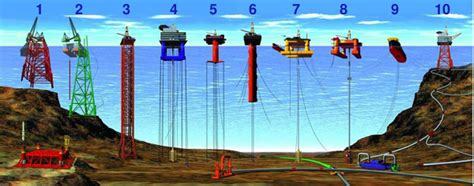Text
The longer I exist as a loudly proudly gay man the more I think that cishet men aren't actually attracted to women.
44K notes
·
View notes
Text
106. The Valkyrie, by Kate Heartfield
“The only beginning that matters came centuries later. My beginning was in you, Gudrun.” The vast majority of my writing here is free to read and will remain so, but if you enjoy these sorts of posts, your support on Patreon or as a paying subscriber through WordPress is what subsidises me to write more of them. You can also find me on BlueSky. If you enjoy reading this, please share it! Cover…

View On WordPress
#book reviews#books#fantasy#Harper Voyager#historical fantasy#Kate Heartfield#medieval German literature#Norse sagas#reviews
0 notes
Text
105. Damned, by Genevieve Cogman
Vampires, ghosts, and damnatio ab memoriae. The vast majority of my writing here is free to read and will remain so, but if you enjoy these sorts of posts, your support on Patreon or as a paying subscriber through WordPress is what subsidises me to write more of them. You can also find me on BlueSky. If you enjoy reading this, please share it! Cover art for Damned, featuring Big Ben and the…

View On WordPress
0 notes
Text
104. Heir of Light by Michelle Sagara
A solidly enjoyable entry in the newest offshoot of a long-running and very entertaining series. The vast majority of my writing here is free to read and will remain so, but if you enjoy these sorts of posts, your support on Patreon or as a paying subscriber through WordPress is what subsidises me to write more of them. You can also find me on BlueSky. If you enjoy reading this, please share…

View On WordPress
0 notes
Text

The Dabous Giraffes - neolithic petroglyphs found in Saharan Niger estimated to be 6,000 to 8,000 years old. The bigger of the two giraffes is 5.4 meters long and is the largest known petroglyph in the world.
11K notes
·
View notes
Text

The Dabous Giraffes - neolithic petroglyphs found in Saharan Niger estimated to be 6,000 to 8,000 years old. The bigger of the two giraffes is 5.4 meters long and is the largest known petroglyph in the world.
11K notes
·
View notes
Text




joan baez for rolling stone, 2025. photos by ulysses ortega
4K notes
·
View notes
Video
When I was a kid, I thought those pillars went down to the sea floor.
In reality, they usually go down to some large submerged floats.

295K notes
·
View notes
Text
I'm inventing something called "Devereaux weekends" where you take a weekend trip to a town you've never been to, packing only clothes you own but have always been too self-conscious to wear, and putting on a fake identity the entire time, which you can guitlessly shed once you return home
1K notes
·
View notes
Text
Correct me if I'm wrong, but it's my understanding that in the criminal underworld, only two things are really widely known about Parker:
Parker is insane
Parker is a world-famous thief—the Parker
No one really knows what she looks like, who she works for, or even that she is a she.
So may I suggest "The 101 Parkers Job":
There's a global job so huge and so important that it behooves the Leverage crew to split up and convince many, many marks that the person they're dealing with is the Parker. Obviously, Parker can only be in place at a time, so this includes the usual suspects—Eliot, Hardison, Sophie, Harry, and Breanna—plus lots of members of Leverage International as well as some surprise faces, including Maggie, Quinn, McSweeten, Tara, and Sterling (and that's just the tip of the iceberg), all pretending to be Parker. For one glorious episode, they are all Parker, embodying all of the weirdness and skill that entails to the best of their abilities, guided by comms in the most chaotic job possible.
3K notes
·
View notes
Text
military recruiter: so what got you guys interested in the marine corps
enormous horde of hagfish, ispods and bottom-feeding crustaceans: oh. uh. is that how you pronounce it
171K notes
·
View notes
Text
103. Deanna Raybourn, Killers of a Certain Age
They’ve been killers for a very long time… The vast majority of my writing here is free to read and will remain so, but if you enjoy these sorts of posts, your support on Patreon or as a paying subscriber through WordPress is what subsidises me to write more of them. You can also find me on BlueSky. If you enjoy reading this, please share it! Cover art: A stylised red hand with a bracelet of…

View On WordPress
0 notes
Text
It's been years since I started seeing nutrient flows constantly in my daily life, and the more I study agriculture, the more I see them.
See, every time you harvest something, you take the nutrients in that item away from the soil, and they go somewhere else. When I put a banana peel in my compost bin, I think (a little gleefully) about how I've just added an exotic, different profile of nutrients to my own property--but I also think about that distant banana plantation that lost tons of nutrients per year to US grocery stores, and I wonder what they replaced those nutrients with.
The farmer across my field grows corn, which gets harvested for feed. Corn is a nitrogen-hungry crop. Every year, that corn sucks up nutrients, which get harvested and shipped away. The farmer, being a conventional farmer, mostly replaces those with a conventional fertilizer. Nitrogen is often applied to fields in the form of ammonia fertilizer, which is made via a process that binds nitrogen in the air with hydrogen from natural gas. This feels like a vast resource, but of course we know it's not inexhaustible and not without cost.
Ideally, said farmer does soil tests and applies a carefully considered amount of ammonia. It is taken up by the growing plants and relatively little is lost. Possibly (often), though, some of the ammonia is leached out via rain and ends up in waterways, where it causes plant overgrowth and algal blooms, which harm the waterways in several ways, and turn those nutrients from a resource into a contaminant.
Meanwhile, the corn is also uptaking a variety of other nutrients from the soil which the commercial fertilizer is NOT replacing. Year by year, those nutrients get shipped off to distant feedlots and depleted in the soil. Eventually, those nutrients are gone from my neighbor's field and, quite possibly, languishing in a manure lagoon somewhere in, say, Indiana, where one can only hope it's properly treated and made into compost. But, you know. Not necessarily.
When I buy compost at the store, it's usually based in either cow manure or "forest products". Hopefully, depending on brand, those forest products MIGHT be collected municipal yard waste. Which is pretty good. Those suburbanites don't want their leaves, I do, win/win.
Except that because those suburbanites raked their yard waste, they now need at some point to fertilize their trees, shrubs, and turf grass. Meanwhile, they've eliminated habitat for the many insects that use leaf litter to either overwinter or reproduce. They may not be counting the costs, but the costs don't stop existing.
The ebb and flow of nutrients is something that, in the current system, goes utterly unregarded by most of the people taking part in the process. Even gardeners bring nutrients onto their soils mostly without thinking about the places those nutrients came from. I think in a sustainable world, that needs to change.
Also probably we need to do a hell of a lot more cover-cropping.
6K notes
·
View notes

















